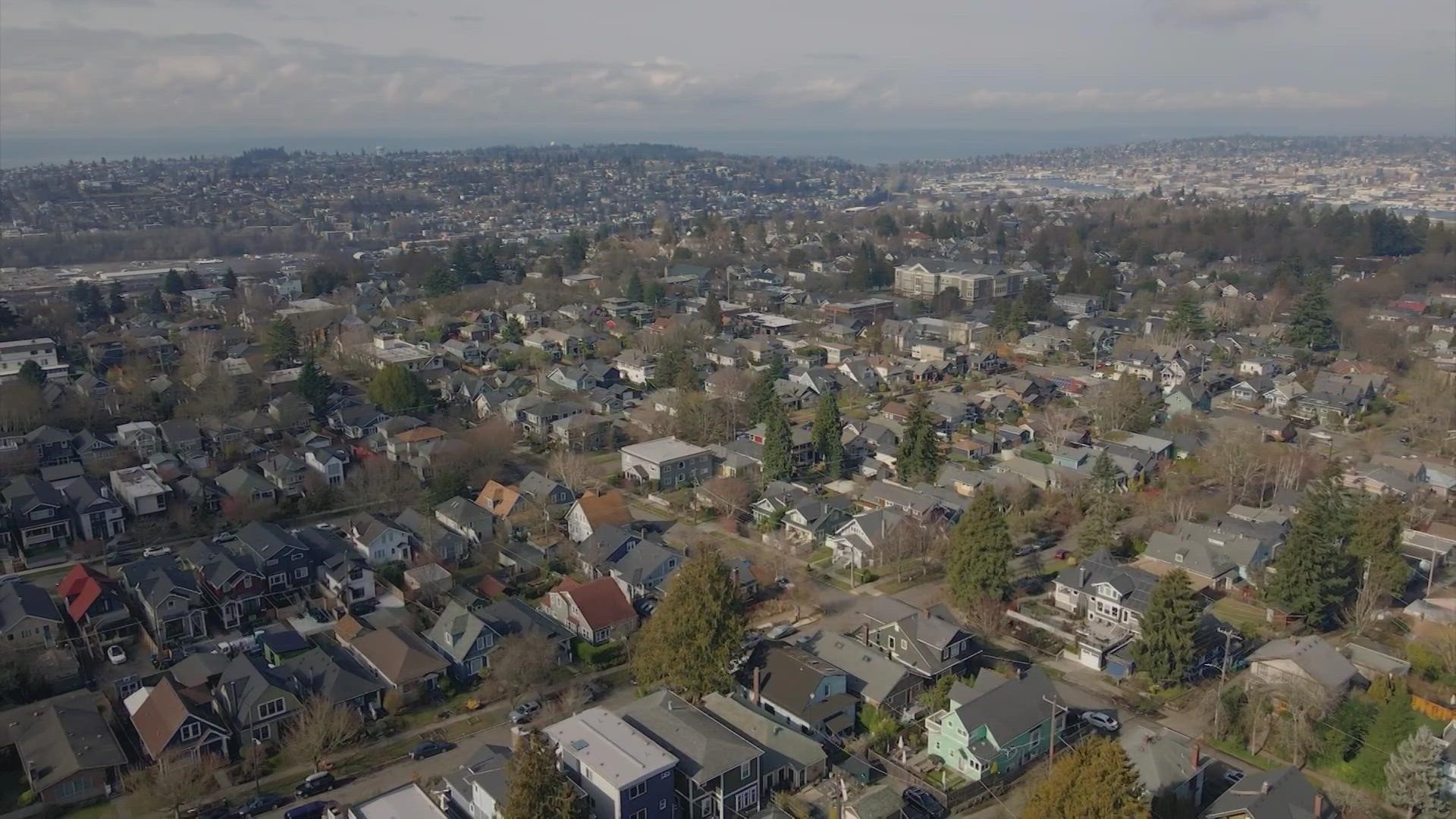SEATTLE — A newly finalized report from the City of Seattle showed around 255 net acres less tree canopy cover in 2021 compared to 2016. The city hopes to achieve 30% cover by 2037, with restoration distributed equitably across Seattle.
City of Seattle Office of Sustainability and Environment Urban Forestry Advisor Patti Bakker says the benefits of trees extend beyond the shade they offer during heatwaves.
"They're these amazing machines that are critical infrastructure for our city," Bakker said. "They clean our air and water, they improve our outcomes, they strengthen community cohesion, they give us a healthier community."
Bakker says the city saw a net loss of 255 acres between 2016 and 2021, an area roughly the size of Green Lake. Some of the driving factors, she says, included climate change, aging trees, competing uses for land, infrastructure projects, development, other needs in years and increasing maintenance costs.
"We will still be doing more detailed analyses of what's happening in neighborhoods or different areas across the city but we did see some trends," Bakker said. "The loss didn't happen equitably, and our environmental justice priority areas started with less canopy in 2016 and lost canopy at a higher rate."
Bakker says the city has already begun to increase focus on improving canopy in those priority areas and are seeing some new success in adding trees, but canopy gains take longer than losses.
"The effects from climate change that we're seeing- hotter and drier summers- are also really stressing out our existing trees and making it harder for trees to get established," Bakker said. "So for instance, we used to have a three-year establishment period, to water and care for trees after planting, now we're seeing an increasing establishment period."
The city says tree canopy cover is critical for "lowering temperatures and reducing heat island effects in our warming climate," with the report citing that neighborhoods with 25% canopy cover were one degree cooler than other neighborhoods, while industrial areas without as much canopy had warmer temperatures. These conditions were also found in neighborhoods such as the Chinatown-International District and in the south end of Rainier Valley, according to a news release.
Recommendations for improving conditions include planting new trees, caring for current trees, regulating tree preservation, anticipating climates, and continuing partnerships with organizations working to protect and foster more tree canopy.

